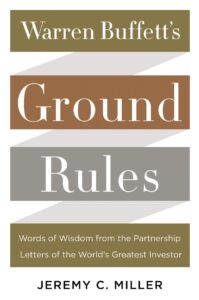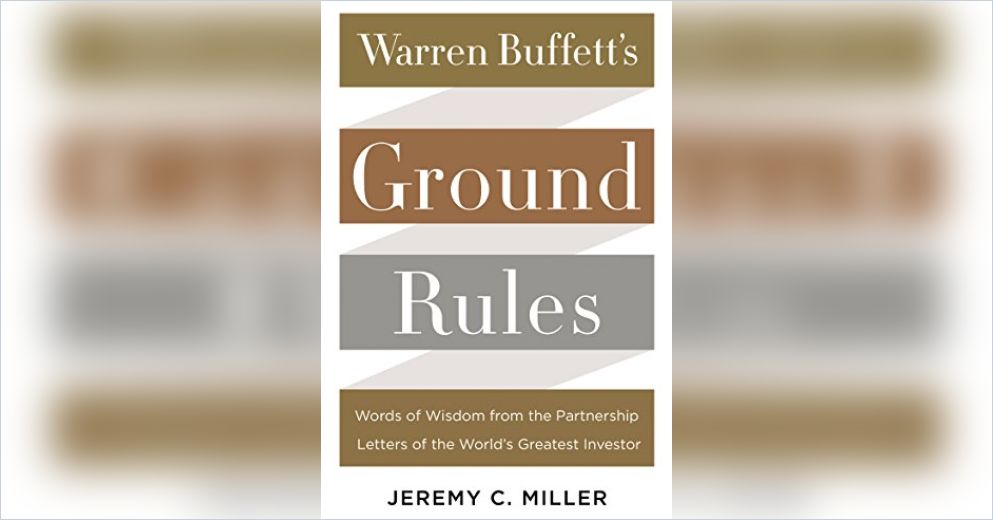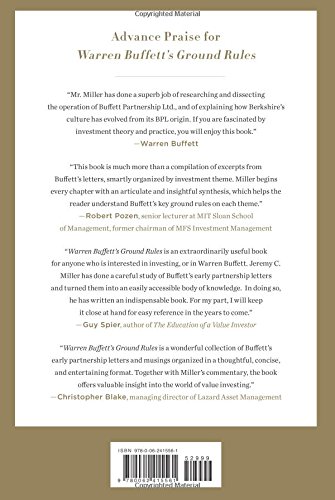Are you an investor looking for great investing insights? Get Warren Buffett’s Ground Rules PDF and get all the investing insights you need. Jeremy Miller Warren Buffett’s Ground Rules is a study in investment strategy, based on a series of letters known as the “Partnership letters,” originating in the late nineteen-sixties. As a young man, Warren Buffett set up a partnership for stock market investment. He established the group upon certain core principles of investing, which he helpfully documented. Get Warren Buffett’s ground rules download in a click below to maximize your knowledge about investing.
Table of Contents
Warren Buffett’s Ground Rules PDF Book Details
- Book Title: Warren Buffett’s Ground Rules PDF
- Author: Jeremy C. Miller
- Published: April 26, 2016
- Goodreads Link: Warren Buffett’s Ground Rules by Jeremy C. Miller
- ISBN: 9780062415578, 9780062415561
- Formats: [PDF] [Epub]
- No. of pages: 299
- Size: 1.7 MB
- Genre: Non-Fiction, Economics, Biography, Business, Self-Help,
- Language: English
- File Status: Available for Download
- Price: Free
Warren Buffett’s Ground Rules Book Summary
Using the letters Warren Buffett wrote to his partners between 1956 and 1970, a veteran financial advisor presents the renowned guru’s “ground rules” for investing—guidelines that remain startlingly relevant today.
In the fourteen years between his time in New York with value-investing guru Benjamin Graham and his start as chairman of Berkshire Hathaway, Warren Buffett managed Buffett Partnership Limited, his first professional investing partnership. Over the course of that time—a period in which he experienced an unprecedented record of success—Buffett wrote semiannual letters to his small but growing group of partners, sharing his thoughts, approaches, and reflections.
Compiled for the first time and with Buffett’s permission, the letters spotlight his contrarian diversification strategy, his almost religious celebration of compounding interest, his preference for conservative rather than conventional decision making, and his goal and tactics for bettering market results by at least 10% annually. Demonstrating Buffett’s intellectual rigor, they provide a framework for the craft of investing that had not existed before: Buffett built upon the quantitative contributions made by his famous teacher, Benjamin Graham, demonstrating how they could be applied and improved.
Jeremy Miller reveals how these letters offer us a rare look into Buffett’s mind and offer accessible lessons in control and discipline—effective in bull and bear markets alike, and in all types of investing climates—that are the bedrock of his success. Warren Buffett’s Ground Rules paints a portrait of the sage as a young investor during a time when he developed the long-term value-oriented strategy that helped him build the foundation of his wealth—rules for success every investor needs today.

Warren Buffett’s Ground Rules Review
This masterpiece depicts the genius of Warren Buffett, how he came from someone just interested in the stock market, and willing to work to Benjamin Graham with no salary, just for the sake of knowledge, to become the founder of one of the biggest companies on the stock market and even becoming one of the richest billionaires in the world.
Fascinating dive into the guiding principles of Buffett’s analysis and business decisions. These principles are as much about basic investment guidelines as they are about human judgment, transparency, and fairness — elements of which are constantly referenced, demonstrated, and reiterated throughout his years of partnership letters.
I was curious about this book after having read one of Buffett’s recent annual letters, which was humorous, insightful, and about ten times more enjoyable than I anticipated. With that as a first impression, I was curious to explore a careful study of his decades of shareholder letters and to this end, I am glad to have spent the time with this book.
Pros:
The distillation of Buffett’s approach comes across as a philosophy. He is a witty and observant author. Miller keeps his contributions concise, with each chapter giving a brief summary in relation to the Ground Rule of interest, citing letters, and then ending each chapter with longer excerpts.
Cons:
If you have zero interest in investing, I’d say this book is still a fun and interesting read — but a lot of the content is framed with business analysis in mind. This might not be for you. There is also a bit of redundancy throughout the book, but I took it with an educational approach: ground rules are repeated in various forms to really drive home Buffett’s philosophy, and Buffett himself missed no opportunity to repeat these principles via many different examples over the years.
The only serious con I can think of is the book focusing on Buffett’s first partnership, which he closed in 1969 before subsequently moving on to manage (and become CEO) of Berkshire Hathaway. I’m sure there’s a fascinating history in the Berkshire years and it would have been nice to read about that.

Like the Intelligent investor, this book is a great piece of wisdom, perfectly written, pleasant to follow, with great content. Full of great ideas, I also loved the topic of bonds, the idea that the yield curve inverts because the biggest investment market, the bond market, has smart money that is buying long term bonds because expecting the yields to go down in the future is amazing, and an example of how Warren Buffett can get the big picture in investments
Take-Aways
- Warren Buffett never wrote a textbook on investing, but his letters to his partners in the 1960s provide a roadmap to his thinking.
- Buffett got his start investing on behalf of his family and friends.
- He began in 1956 with $105,000; in a few years, his fund grew to more than $7 million.
- Buffett cared about his relative performance, not his overall performance – he aimed to beat the Dow.
- He was a disciple of Ben Graham, the bargain-hunting godfather of value investing.
- “Soggy cigar butts” – companies with ugly business models but hidden value – were Buffett’s favorite targets.
- Mapmakers and farm equipment manufacturers were among the unloved companies the Oracle of Omaha found worthy of investment.
- Buffett eventually outgrew the cigar butt strategy; he came to prefer quality companies over cheap ones.
- He bought into blue-chip companies such as American Express and Disney.
- The fundamentals of Buffett’s approach have changed little over the decades.
Recommendation
For consistent success in volatile markets, it’s hard to beat Warren Buffett. Authors trying to unlock the Oracle of Omaha’s secrets have written shelves full of books. This compilation proves a welcome addition to the canon. Investment manager Jeremy C. Miller dives into Buffett’s correspondence from 1960s. He finds that Buffett has followed the same common-sense principles for decades.
The letters date back to when Buffett managed relatively small sums, so his strategies are more relevant to individual investors than his more recent moves are. Miller argues that Buffett’s investing strategy includes nothing flashy or complicated – his genius is in making sound investment decisions again and again. Knowdemia.com highly recommends Miller’s analysis of Buffett’s early letters to investors looking for insight from one of the all-time greats.

Get Warren Buffett’s Ground Rules Download:
OR
